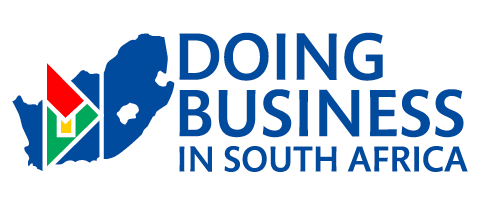Table of Contents
1. Turnover Tax
Turnover tax is a simplified system aimed at making it easier for micro business to meet their tax obligations. The turnover tax system replaces Income Tax, VAT, Provisional Tax, Capital Gains Tax and Dividends Tax for micro businesses with a qualifying annual turnover of R 1 million or less. A micro business that is registered for turnover tax can, however, elect to remain in the VAT system (from 1 March 2012).
Turnover tax is worked out by applying a tax rate to the taxable turnover of a micro business. The rates are applicable for any year of assessment ending during the period of 12 months ending on 28 February 2018:


2. Vat Registration for small businesses
- It is mandatory for any business to register for VAT if the income earned in any consecutive twelve-month period exceeded or is likely to exceed R1 million.
- Any business may choose to register voluntarily if the income earned, in the past twelve-month period, exceeded R50 000.
- A small business that is registered as a micro business under the Sixth Schedule of the Income Tax Act may also register for VAT and may elect to submit returns and payments every four months, ending on the last day of June, October and February.
3. Registering for Employees' Tax (PAYE)
- It is mandatory for any business to register for VAT if the income earned in any consecutive twelve-month period exceeded or is likely to exceed R1 million.
- Any business may choose to register voluntarily if the income earned, in the past twelve-month period, exceeded R50 000.
- A small business that is registered as a micro business under the Sixth Schedule of the Income Tax Act may also register for VAT and may elect to submit returns and payments every four months, ending on the last day of June, October and February.


3.1 Registering as an Employer
According to law, an employer must register with the South African Revenue Service (SARS) within 21 business days after becoming an employer, unless none of the employees are liable for normal tax.
For Employers – if you want to apply for registration of Payroll taxes:
- How to register for PAYE on eFiling
- Complete the EMP101e Payroll taxes – Application for Registration taxes form
- For assistance in completing the form, see the Guide for completion of Employer Registration application.
- For more information on Employees’ tax, see the Guide for Employers iro Employees’ Tax for more detail.
- If you are already registered for another tax type via eFiling, please see How to complete the Registration, Amendments and Verification Form (RAV01) guide as part of the Single Registration initiative.
3.2 Registering as a branch
Where an employer has, for registration purposes, applied for separate registration of branches of the enterprise, each branch is considered to be a separate employer.
To register as a branch separately from the main branch, an EMP102e form – Payroll Taxes – Application for Branch Registration must be filled in and sent to SARS.


4. Change of registered details
An employer must let SARS know within 21 business days of any changes in registered particulars (e.g. change of name, address or when no longer operating as an employer, etc.).
5. Registration for SDL and UIF
An employer, who needs to register with SARS, for PAYE and/or SDL, also needs to register to pay UIF contributions.
5.1 Registering for SDL purposes
Where an employer is liable to pay SDL, the employer must register with SARS and show the jurisdiction of the Skills Education and Training Authority in South Africa (SETA) within which they must be classified.
Although some employers are exempt from paying SDL, all employers must be registered.
5.2 Registering for UIF Contribution purposes
Where an employer is liable to pay UIF contribution, the employer must register with either SARS or the UIF office (whichever is applicable) for the payment of the contributions.
5.3 Unemployment Insurance Fund
Please note: To apply for UIF benefits during the COVID-19 disaster period, please visit the Department of Employment and Labour’s UIF Online Portal.
The Unemployment Insurance Fund (UIF) gives short-term relief to workers when they become unemployed or are unable to work because of maternity, adoption leave, or illness. It also provides relief to the dependants of a deceased contributor.
The unemployment insurance system in South Africa is governed by the following legislation:
- Unemployment Insurance Act, 2001 (the UI Act)
- Unemployment Insurance Contributions Act, 2002 (the UIC Act)
These Acts provide for the benefits, to which contributors are allowed, and the imposition and collection of the contributions to the UIF, respectively, and came into operation on 1 April 2002.


5.4 Who is UIF for?
All employees, as well as their employers, are responsible for contributions to the UIF. However, an employee is excluded from contributing to the UIF if he or she–
- Is employed by the employer for less than 24 hours a month
- Receives remuneration under a contract of employment as contemplated in section 18(2) of the Skills Development Act, 1998 (Act No.97 of 1998)
- Is employed as an officer or employee in the national or provincial sphere of Government
- Entered the Republic for the purpose of carrying out a contract of service, apprenticeship or learnership within the Republic. If upon termination, the employer is required by law or by the contract of service, apprenticeship or learnership, or by any other agreement or undertaking, to send home that person, or if that person needs to leave the Republic
- Is the President, Deputy President, a Minister, Deputy Minister, a member of the National Assembly, a permanent delegate to the National Council of Provinces, a Premier, a member of an Executive Council or a member of a provincial legislature or
- Is a member of a municipal council, a traditional leader, a member of a provincial House of Traditional Leaders and a member of the Council of Traditional Leaders?
5.5 What steps must I take?
Any employer, who is registered with SARS for Employees’ Tax, also needs to register to pay UIF contributions. You can register once for all different tax types using the client information system.
The following employers must register at the UI Commissioner’s office for purposes of paying UIF contributions, an employer who:
- Doesn’t need to register with SARS for Employees’ Tax purposes
- Hasn’t voluntarily registered with SARS as an employer
- Pays or is liable to pay remuneration to an employee must contribute on a monthly basis to the UI Fund.
5.6 How much do you need to pay?
- The amount of the contribution due by an employee, must be 1% of the remuneration paid by the employer to the employee.
- The employer must pay a total contribution of 2% (1% contributed by the employee and 1% contributed by the employer) within the prescribed period.
Please note: As from 1 October 2012, the maximum earnings ceiling is R14 872 per month or R178 464 annually. For employees who earn more than this amount, the contribution is calculated using the maximum earnings ceiling amount. Therefore, the maximum contribution which can be deducted, for employees who earn more than R14 872 per month, is R148.72 per month.
- Excess amounts shouldn’t be included as remuneration or as a leviable amount for the purposes of UIF contributions.
- The amounts deducted or withheld must be paid by the employer to SARS on a monthly basis, by completing the Monthly Employer Declaration (EMP201). The EMP201 is a payment declaration in which the employer declares the total payment together with the allocations for PAYE, SDL, UIF and/or Employment Tax Incentive (ETI), if applicable.
A unique Payment Reference Number (PRN) will be pre-populated on the EMP201, and will be used to link the actual payment with the relevant EMP201 payment declaration.
5.7 How and when should it be paid?
It must be paid within seven days after the end of the month during which the amount was deducted. If the last day for payment falls on a public holiday or weekend, the payment must be made on the last business day before the public holiday or weekend.
The following payment methods are available:
- eFiling
- Electronic payments through the internet (EFT)
- At a branch of one of the relevant approved banking institutions.
6. What is Skills Development Levy (SDL)?
SDL is a levy imposed to encourage learning and development in South Africa and is determined by an employer’s salary bill. The funds are to be used to develop and improve skills of employees.
6.1 Who must pay SDL?
SDL is due by employers who have been registered. You can register once for all different tax types using the client information system.
Top Tip: Where an employer expects that the total salaries will be more than R500 000 over the next 12 months, that employer becomes liable to pay SDL.


6.2 What steps must the employer take?
If an employer becomes liable, they need to register for SDL.
The following employers are exempt from paying SDL.
- Any public service employer in the national or provincial sphere of Government. (These employers must budget for an amount equal to the levies due for training and education of their employees).
- Any national or provincial public entity, if 80% or more of its expenditure is paid directly or indirectly from funds voted by Parliament. (These employers must budget for an amount equal to the due for training and education of their employees).
- Any public benefit organisation (PBO), exempt from paying Income Tax in terms of Section 10(1) (cN) of the Income Tax Act No.58 of 1962, which only carries on certain welfare, humanitarian, health care, religion, belief or philosophy public benefit activities or only provides funds to a PBO and to whom a letter of exemption has been issued by the Tax Exemption Unit (TEU).
- Any municipality to which a certificate of exemption is issued by the Minister of Labour.
- Any employer whose total remuneration subject to SDL (leviable amount) paid/due to all its employees over the next 12-month period won’t exceed R500 000. If this is the reason for exemption, these types of employers are not required to register to pay SDL.
6.3 How much do you need to pay?
1% of the total amount paid in salaries to employees (including overtime payments, leave pay, bonuses, commissions and lump sum payments).
The amounts deducted or withheld by the employer must be paid to SARS on a monthly basis, by completing the Monthly Employer Declaration (EMP201). The EMP201 is a payment declaration in which the employer declares the total payment together with the allocations for PAYE, SDL, UIF and/or Employment Tax Incentive (ETI).
A unique Payment reference number (PRN) will be pre-populated on the EMP201, and will be used to link the actual payment with the relevant EMP201 payment declaration.
6.4 How and when should it be paid?
It must be paid within seven days after the end of the month during which the amount was deducted. If the last day for payment falls on a public holiday or weekend, the payment must be made on the last business day before the public holiday or weekend. The following payment methods are available:
- eFiling
- Electronic payments through the internet (EFT)
- At a branch of one of the relevant approved banking institutions
